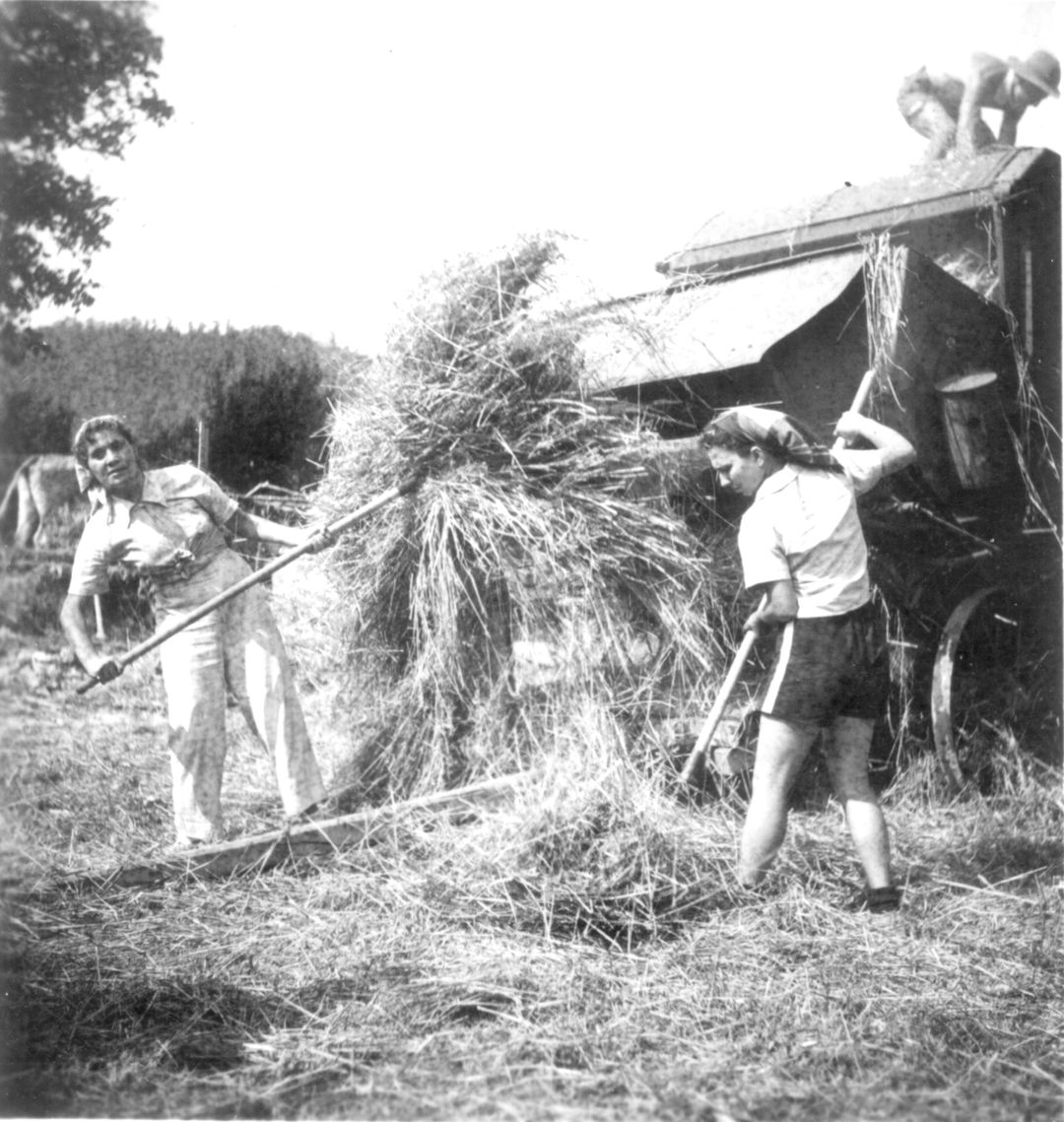The ORT La Roche Training Farm
Following Hitler’s rise to power in 1933, a determined effort was made by ORT to direct some German refugees to agriculture. The intention was to bring to neighbouring France a small group of German Jews as a nucleus for attracting others. The initial refugees settled in the Lot et Garonne region with ORT’s assistance.

Most of the German refugees – mostly intellectuals and merchants forced to find a new means of existence – did not have a background in agriculture and it was clear that training was needed. With the help of Dr J. Rosen of Agro-Joint, in 1939, a committee of agronomists found a suitable area for a training farm at the Farm de La Roche in the district of Villeneuve, between Bordeaux and Toulouse in the Department of Lot et Garonne.

The French government favoured the programme, and soon some 20 families were settled at La Roche, ORT supplying the necessary equipment and technical guidance. The programme was led by David Klementinowsky, who first joined ORT in Berlin in the 1920s and was Manager of the Agricultural Section of the ORT Union before taking on the La Roche project.


During the German occupation of France many of the ORT supported farmers in the region were interned in French concentration camps. ORT did whatever it could to negotiate with the authorities on their behalf and helped the women and children left behind to continue their agricultural work.


Against the odds, La Roche was able to continue in occupied France until 1943, providing an oasis of Jewish life for the many families that lived there. See Report on ORT's activities in France, 1943.




The community celebrated Jewish festivals and held cultural evenings, attended by both Bramson and Syngalowski.
In 1942 the Central Board decided to allocate La Roche as a school for adolescents. Most of the trainees already at La Roche were transferred to ORT’s other two farms, Combes and Angiroux. The project continued in this format until 1943.

After the war, in the late 1940s, ORT France was faced with increasing numbers of applicants for agricultural training at the three ORT farms in La Roche, Cambe de Pujols, and Gars. Of the original refugees, only six families were able to remain on the land beyond the war. But others remained and ORT’s agricultural programme provided assistance to those Jewish farmers. Under an agreement with the Intergovernmental Committee for Refugees, later IRO, and the French Jewish loan Kassa, ORT was entrusted with examining applications for loans made by Jewish farmers.


La Roche became an agricultural school for Chalutzim [pioneers] who were preparing for emigration to Palestine with Hechalutz. A drought that had affected south-west France for three years running meant conditions were tough. The streams and wells dried up and work in the fields and gardens proved more and more difficult. The ORT farm harvests were also very poor. ORT directors and staff made the most intense efforts to keep the damage done by the drought down to the minimum. The young Chalutzim took a great interest in both the practical and theoretical work. Those among them who emigrated to Palestine later wrote that the apprenticeship passed at La Roche was of immense value to them and facilitated their establishment as farmers considerably.





![Pupils and staff, La Roche, France, Rosh Hashanah [Jewish New Year], 1940. Archive Photograph](/fileadmin/_processed_/d/e/csm_psa1886_a7ed33f7da.jpg)